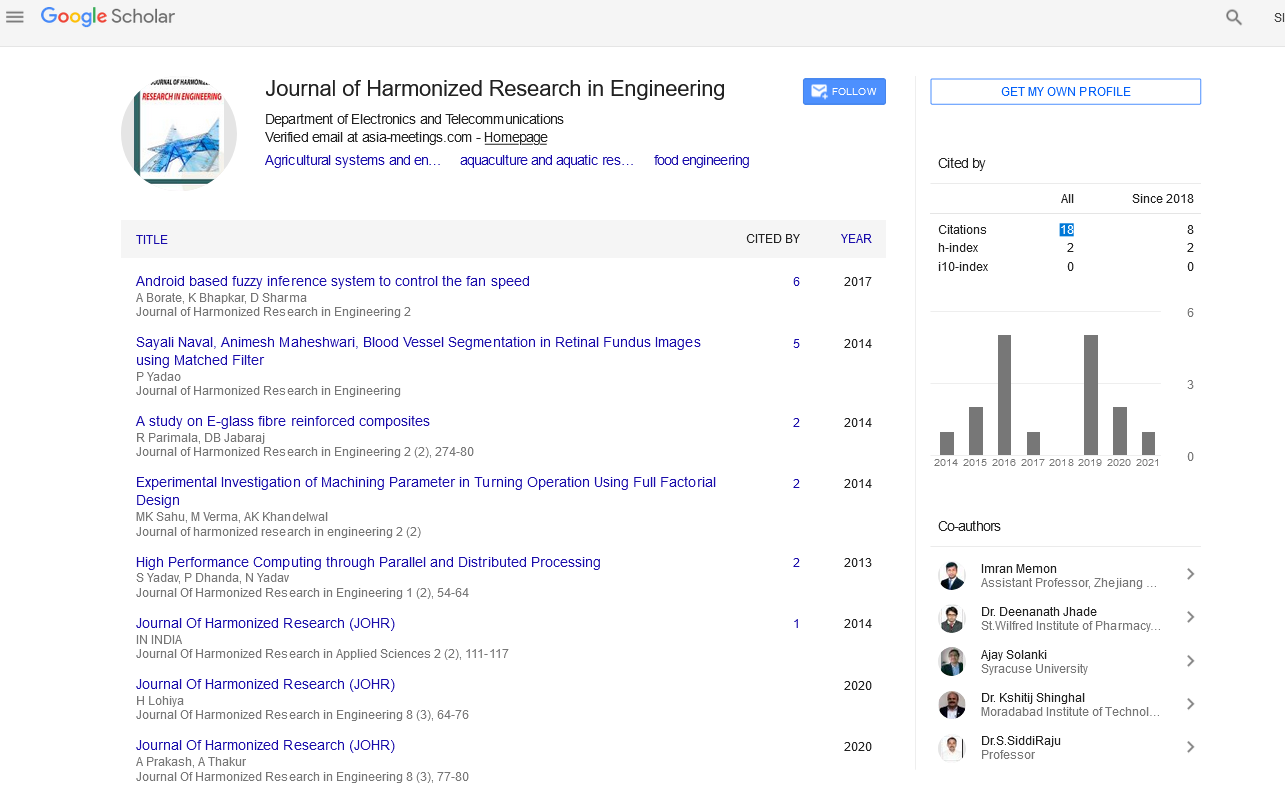Commentary - (2022) Volume 10, Issue 3
ENGINEERING TECHNIQUE FOR SYNTHETIC BIDIRECTIONAL PROMOTERS
Varoni Tumrasvin*Received: Sep 01, 2022, Manuscript No. JHRE-22-77536 ; Editor assigned: Sep 05, 2022, Pre QC No. JHRE-22-77536 (PQ); Reviewed: Sep 19, 2022, QC No. JHRE-22-77536 ; Revised: Sep 27, 2022, Manuscript No. JHRE-22-77536 (R); Published: Oct 05, 2022, DOI: 10.30876/2347-7393.22.10.202
Description
Transcription into mRNA and subsequent translation into proteins allow DNA’s genetic information to be expressed. RNA Polymerase holoenzymes (RNAP) initiate mRNA polymerization when they detect particular DNA sequences in the promoter regions during transcription. In interactions with sigma factors, co-factors, and core RNA polymerase, promoters contain a number of DNA sequence regions that are targets. Ribosomes translate the downstream coding sequences by binding to certain mRNA patterns in the 5′ Untranslated Regions (5′ UTRs), such as the Shine- Dalgarno or Kozak sequence (CDSs).
Due to the arrangement of its primary DNA components, promoters have long been assumed to be unidirectional, i.e., to induce transcription in a single direction. Antisense non-coding RNAs (ncRNAs) have been found to be widely expressed in a number of taxa, including prokaryotes, yeast, mice, fruit flies, plants, and humans. Bidirectionality appears to be a key property of promoters, as evidenced by the antisense transcription of ncRNAs surrounding them being postulated as one of the genomic regulation mechanisms. Some short antisense transcripts produced by unidirectional promoters are stable, but the vast majority decay very quickly. In contrast, a family of promoters known as Bidirectional Promoters (BDPs) not only generate mature transcripts in both directions but also encode proteins in both of the transcripts.
BDPs have been employed to co-express heterologous genes in E. coli, filamentous fungus, yeast, plants, and mammalian cells in many synthetic biology-related research projects. These efforts were motivated by the advantages provided by the aforementioned natural systems. Despite repeated attempts, it is challenging to co-express multiple enzymes from the same metabolic pathway because transcription and translation must be coordinated to guarantee the balanced expression of numerous genes. The cumulative protein yield, relative enzymatic activity, and the modulation of these parameters must also be optimised throughout translation. Otherwise, the host may experience growth restrictions brought on by the overexpression of onerous proteins or the buildup of toxic intermediate metabolites, which could culminate in systemic failure. Co-expression of genes participating in the same metabolic pathway must be adjusted and balanced in order to prevent such negative effects. In synthetic biology, there are currently no methods that enable the rational construction of complete promoters and 5′ UTRs (5′ Regulatory Sequences, RES). Existing methods rely mostly on the combinatorial assembly of precharacterized 5′ RESs used in series to express CDSs in the absence of such tools.
It is essential for genetic components to work in harmony with one another, especially the 5′ UTRs and CDSs. In the 5′ UTR and close to the CDS, mRNA structures play a critical role in facilitating efficient translation. A small number of typical regulatory DNA pieces may not provide efficient expression when connected to a novel CDS, for example because they may generate undesirable mRNA structures. Although they have been developed, computational methods for predicting 5′ UTR sequences particular to downstream CDSs have never been used in a bidirectional situation. Because of this, there aren’t many methods available right now that enable the balanced co-expression of heterologous genes in a metabolic pathway in several hosts.
In this study, we demonstrate and talk about how we used random DNA libraries to produce 5′ RES that is bidirectional in E. coli. We provide a dependable, allencompassing method for creating synthetic BDPs and identify specific DNA fragments that should be of interest to the synthetic biology community. The technique can also be used to create DNA fragments particular to an organism or gene, gain important insights into the characteristics of BDPs, and find uses for it in the engineering of metabolic pathways and the co-expression of heterologous proteins.

Google Scholar citation report
Citations : 43
Journal of Harmonized Research in Engineering received 43 citations as per google scholar report









